Physical training for bronchiectasis
- PMID: 12137647
- PMCID: PMC7017844
- DOI: 10.1002/14651858.CD002166
Physical training for bronchiectasis
Abstract
Background: The pathophysiology of bronchiectasis may result in the development of dyspnoea and decreased exercise tolerance, both of which can impact on a patient's quality of life and ability to perform activities of daily living. There is little information regarding the benefits of physical training in bronchiectasis: however it is probable that the benefits of physical training in bronchiectasis are at least comparable to benefits demonstrated in other respiratory conditions. There is also no information regarding the effects of non-adherence to prescribed physical training in bronchiectasis. However as in patients with COPD non-adherence may contribute to a deterioration in the patient's condition and conceivably the long term prognosis.
Objectives: The objective of this review is to determine whether a prescribed regime of physical training produces improvements or prevents deterioration in physiological and clinical outcomes in bronchiectasis compared to no physical training.
Search strategy: We searched the Cochrane Airways Group specialised register and the Cochrane Controlled Clinical Trials Register.
Selection criteria: Randomised or quasi randomised controlled trials in which a prescribed regime of physical training are compared to no physical training in patients with bronchiectasis.
Data collection and analysis: Three studies were identified. One was did not meet the inclusion criteria and two appeared in abstract form only. More comprehensive data will be incorporated into this review once data from those two trials are published, and when further data is made available to the authors of this review.
Main results: Results from the two studies published in abstract showed that inspiratory muscle training compared to sham or no inspiratory muscle training improved endurance exercise capacity: Weighted Mean Difference (WMD) 264 metres (95% CI 16.4 to 512 metres). PiMax improved: WMD 25 cms H20 (95% CI 11.6 to 38.4 cms H2O )as did quality of life measured with the CRQ: WMD 12.4 units (95% CI 2.4 to 22.5 units).
Reviewer's conclusions: This review only provides evidence of the benefits of inspiratory muscle training and provides no evidence of the effect of other types of physical training (including pulmonary rehabilitation) in bronchiectasis.
Conflict of interest statement
None known.
Figures
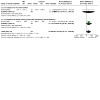
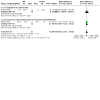
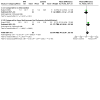
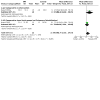
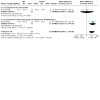
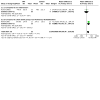
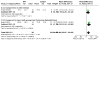

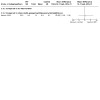
References
References to studies included in this review
Newall 2000a {published data only}
-
- Newall C, Henson M, McConnell AK, Stockley RA, Hill SL. The effect of inspiratory muscle training (IMT) on pulmonary function, exercise tolerance, and quality of life in patients with bronchiectasis (BE). In: European Respiratory Society. Vol. August- September. 2000:1.
Newall 2005 {published data only}
-
- Newall C, Henson M, McConnell AK, Stockley RA, Hill SL. The effects of pulmonary rehabilitation (PR ) in patients with bronchiectasis (BE). In: European Respiratory Society. Vol. August-Sept. 2000:3.
References to studies excluded from this review
Choe 1996 {published data only}
-
- Choe KH Park YJ, et al. The effect of pulmonary rehabilitation in patients with chronic lung disease. Tuberculosis and respiratory diseases 1996;43(5):736-45.
Kellett 2005 {published data only}
-
- Kellett F, Redfern J, Niven RMcL. Evaluation of nebulised hypertonic saline (7%) as an adjunct to physiotherapy in patients with stable bronchiectasis. Respiratory Medicine 2005;99(1):27-31. - PubMed
Additional references
Foster 1990
-
- Foster S, Thomas HM. Pulmonary rehabilitation in lung disease other than chronic obstuctive pulmonary disease. American Review of Respiratory Diseases 1990;141:601-604. - PubMed
Jadad 1996
-
- Jadad A, Moore RA, Carroll D, Jenkinson C, Reynolds JM, Gavaghan DJ, et al. Assessing the quality of reports of randomised controlled trials: is blinding necessary? Controlled Clinical Trials 1996;17(1):1-12. - PubMed
Morgan 1997
-
- Morgan M, Singh S. Practical Pulmonary Rehabilitation. 1st edition. London: Chapman and Hall Medical, 1997.
Revill 1999
Shepherd 1994
-
- Shephard RJ. Aerobic Fitness and Health. Leeds, England: Human Kinetic Publishers, 1994.
Smith 1992
-
- Smith K, Cook D, Guyatt G, Madhavan J, Oxman A. Respiratory Muscle Training in Chronic Airflow Limitation: A Meta-Analysis. American Review of Respiratory Disease 1992;145(3):533-9. - PubMed
Publication types
MeSH terms
LinkOut - more resources
Full Text Sources

